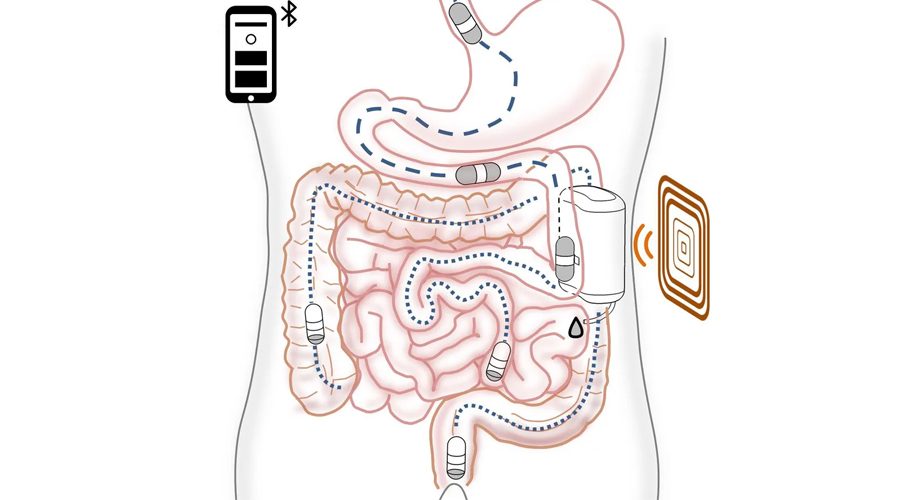Imagine a docking station inside your body where a robot takes care of your insulin dosages.
Interesting? Researchers in Italy have made this idea possible with their new robotic system named “PILLSID.” It sounds a bit more advanced than the capsule cameras used by the NSS to detect cancer inside the body.
PILLSID or Pill-refilled implanted System for Intraperitoneal Delivery functions entirely inside your gut, meaning no more intrusion for supplying insulin.
The system consists of two parts: the first is involved in the delivery of the insulin. It consists of a robotic dispenser that is implanted surgically inside your small intestine walls. The second part resupplies the insulin once the robot is low on the hormone stock with the help of swallowable magnetic capsules containing the hormone.
According to a journal published in Science Robotics, PILLSID has been successfully tested in three diabetic pigs to control their blood glucose level. This intraperitoneal method can be revolutionary for type 1 diabetes patients who take multiple insulin syringes daily.
“Maybe it’s scary to think about a docking station inside the body, but it worked,” says Arianna Menciassi. She is one of the paper’s co-authors and a professor of biomedical robotics and bioengineering in Italy.
PILLSID design and working
The robotic dispenser roughly weighs 165grams and comes in the dimension of 78 millimeters by 63 millimeters by 35 millimeters. It is similar to the present implantable medical devices used commercially.
The device contains four actuators to control the docking procedure. It also has a motor that brings the capsule in the position for resupply of the insulin.
Theoretically, the entire procedure broadly consists of two steps:
The device is implanted in the abdominal walls of the small intestine and is stocked with insulin hormone. The robot then delivers the insulin into the fluid present in the area.
When the insulin reservoir is almost empty, the second step comes into play.
When you need to refill the system, take one of the pills that travels through your digestive system to the abdomen section, where the dispenser is implanted. With the help of magnetic fields, the device pulls the capsule towards it and rotates it into the desired position. The capsule is then pierced with a retractable needle to pump the insulin into the reservoir.
Once empty, the capsule then travels down your body and is flushed out with your poop! The device charges wirelessly, meaning lesser interventions of your doctor to maintain the system. Now, that is an incredible technology.
The only issue researchers are facing with the device is that it pierces through a thin layer of intestinal tissue while refilling the insulin from the capsule. As a result, body fluids enter the robot. For fixing this, the developers are working on sealing the device more sturdily.
Who can benefit the most from insulin robots?
Presently, the intraperitoneal path is not much used due to connecting intraperitoneal catheters to external reservoirs. For instance, implantable insulin pumps have to be refilled using tubes penetrating the body. This is undesirable as it can cause bacterial infections.
As a result, injections are the most widely used device for giving medications. This becomes problematic for type 1 diabetic patients who have to self-administer their insulin doses or take multiple injections in a single day. This diabetes robot has the potential to revolutionize the supply procedure of life-saving drugs in a much less intrusive way.
But this procedure might not just limit itself to insulin supply. The researchers are hopeful that their device can be used in the future for giving medications for various other diseases, including chemotherapy, to patients with gastric, pancreatic, colorectal, and ovarian cancers.
While this insulin robot is still in the preclinical stage, it is evident that implantable medical devices are getting more commercially used with passing days. Robots are already involved in complex surgeries, and we only expect more of them in the coming future.

